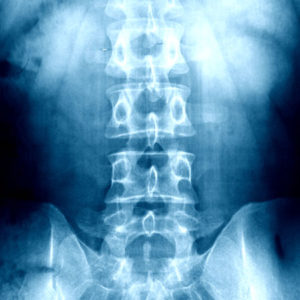Myelography is an x-ray examination of the spinal cord and the space surrounding it, called the subarachnoid space. The x-ray film, or myelogram, is taken after injecting a radiopaque contrast material through a needle placed in this space. Myelography can demonstrate distortions of the spinal cord, the spinal canal within which it lies, and the spinal nerve roots connected to it. It is an effective means of identifying spinal lesions caused by disease or trauma.
This exam, performed about 350,000 times a year in the United States, is relatively safe and painless. Almost all myelograms are followed by a CT scan which greatly increases the diagnostic efficacy. A myelogram is done to provide a very detailed picture of the spinal cord and spinal column, and of any abnormalities that may be present. Often myelography is performed when magnetic resonance imaging (MRI) cannot be performed or has not provided adequate information.
Myelography can identify a herniated or ruptured disk. ‘Slipped disk’ is a common term for this problem. The disks are pads of rubbery tissue that lie between the bones that make up the spine. Disks act to cushion the vertebrae when the backbone comes under pressure, whether from heavy lifting, sudden strain, change in position, or injury. There may be sudden severe back pain if the disk ruptures, or pain may develop gradually with advancing age as the disks degenerate. The lower part of the back is most often affected. A myelogram can accurately locate the disk or disks involved, and show whether disk tissue is pressing on nerves connected to the spinal cord. This information is especially important when surgical treatment is a possibility.
People with spinal arthritis sometimes develop sharp outgrowths of vertebral bone called bone spurs; these may press on spinal nerves and cause pain. Here again, a myelogram can indicate whether surgery might help. The exam also can identify a condition called spinal stenosis where the entire spinal canal is narrowed. Tumors may develop within the spinal cord or surrounding tissues. In addition, cancer from elsewhere in the body may spread to the spine. A myelogram will accurately locate a tumor mass in this region and may suggest the most effective treatment. Other conditions that may be shown by a myelogram include infection, inflammation of the arachnoid membrane that covers the spinal cord, abnormalities of blood vessels that supply the spinal cord, and traumatic injuries.
For more information on myelogram visit radiologyinfo.org (Myelography).

